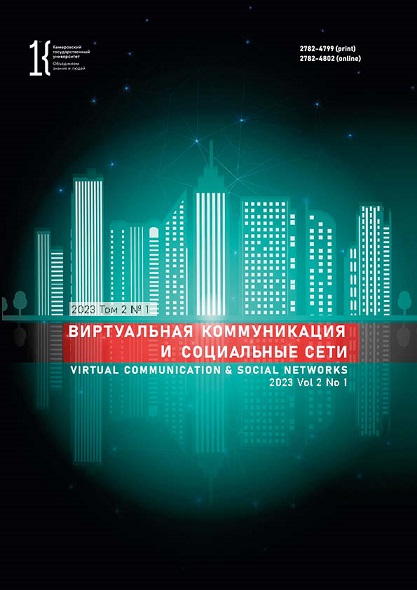Vladivostok, Russian Federation
Modern linguistic didactics focuses on the efficiency of the existing methods of teaching a foreign language while looking for new digital means. The article reviews the use of messengers and social networks as a modern auxiliary means in teaching a foreign language, especially to students of non-linguistic majors. Social networks are able to immerse the student in the linguistic environment through the means of Internet communication, Internet memes, emojis, etc. They provide interactive tools that simulate routine and professional communicative situations. Messengers also provide an opportunity for real-time academic communication. By integrating media applications in the academic routine, teachers employ a personal-activity approach to develop soft skills and self skills. This approach offers authentic relevant materials, modern vocabulary, and a convenient accessible format. It also reduces stress level and enables simultaneous mastering of information, communication, and professional competencies while increasing motivation for learning a foreign language.
social networks, Internet, foreign languages, auxiliary teaching means, learning process, linguistic didactics
1. Bukharbaeva A. R., Sergeeva L. V. Clip thinking of generation Z: methods of developing students' creative potential. RUDN Journal of Studies in Literature and Journalism, 2020, 25(4): 787-796. (In Russ.) https://doi.org/10.22363/2312-9220-2020-25-4-787-796
2. Eroshin A. P. To the question of using emojis in educational activities. Bulletin of the Moscow Region State University. Series: Pedagogy, 2018, (3): 178-183. (In Russ.) https://doi.org/10.18384/2310-7219-2018-3-178-183
3. Zvereva E. A., Khvorova V. A. Generation gap and generation collaboration: media consumption practices of generation Y and Z. MEDIAEducation: media inclusion vs media isolation: VI Intern. Sci. Conf., Chelyabinsk, 23-25 Nov 2021. Chelyabinsk: ChelSU, 2021, pt. 1, 453-458. (In Russ.) https://www.elibrary.ru/iwjlhl
4. Maksimova S. A. Internet meme as an instrument of forming the communicative competence. Art Logos, 2021, (3): 88-99. (In Russ.) https://doi.org/10.35231/25419803_2021_3_88
5. Raitskaya L. K. Implication and development of foreign information competence in higher school. Vestnik Moskovskogo universiteta. Seriia 20: Pedagogicheskoe obrazovanie, 2010, (2): 28-36. (In Russ) https://doi.org/10.51314/2073-2635-2010-2-28-36
6. Smirnova T. V. Modern features of communications on the social networks. Ekonomika. Sotsiologiia. Pravo, 2021, (1): 58-62. (In Russ.) https://www.elibrary.ru/ftbbxk
7. Sokolyanskaya N. N. WhatsApp messenger as a means of distant teaching of linguistic subjects. Universities of Russia in dialogue with time: III All-Russian Sci.-Prac. Conf. with Intern. participation, Moscow, 19 Nov 2020. Moscow: Znanie-M, 2021, 143-151. (In Russ.). https://doi.org/10.38006/00187-010-4.2021.141.149
8. Khamitova K. A. Experience in the integration of remote technologies in the educational process of higher school in the conditions of the COVID-19 pandemic. MEDIAEducation: media inclusion vs media isolation: VI Intern. Sci. Conf., Chelyabinsk, 23-25 Nov 2021. Chelyabinsk: ChelSU, 2021, pt. 1, 296-300. (In Russ.) https://www.elibrary.ru/veoins
9. Carlson S. The net generation goes to college. The Chronicle of Higher Education, Section: Information Technology, 2005, 52(7). URL: http://chronicle.com/article/The-Net-Generation-Goes-to/12307 (accessed 10 Feb 2023).
10. De Martino M., Kovalenko S. A., Tkach G. F., Isidori E. Education and social networking: between connectivism and the critical social philosophy of the new media. RUDN Journal of Sociology, 2022, 22(1): 137-149. https://doi.org/10.22363/2313-2272-2022-22-1-137-149















